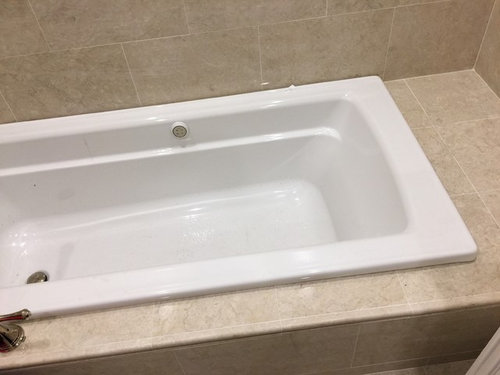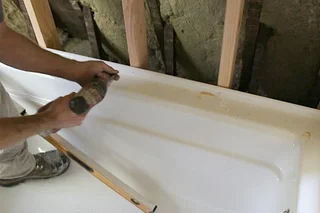The publisher is making several great pointers related to Tools You Need to Install a New Bathtub as a whole in the article down below.

Setting up a bath tub isn't specifically brain surgery, but it does require strong plumbing, woodworking, as well as often, tiling abilities. Changing an old bathtub with a new one is additionally a moderately difficult project. If the old tub is easily available, the job can relocate quickly; if you need to open a wall to remove the old tub as well as position the brand-new tub, the task is a lot harder. In either situation, the project is within a residence handyman's skills, although you will certainly need an assistant to leave the old bathtub and also set in the brand-new one. See to it you have certified yourself for the work and fit attempting it. As opposed to hiring a specialist to take over a halfway-completed project, it is much better to think about employing one before you start. Chances are you may require a professional plumber to make tube connections.
This post will aid you set up a brand-new tub in your bathroom if you have currently bought a new bathtub and also don't require to transform the arrangement of your previous water system pipelines.
Your devices and also product checklist ought to comprise the following:
Preparing for the Installation
Firstly, the supporting framework provided with the bathroom needs to be fitted (if called for) according to the manufacturer's instructions. Next, fit the taps or mixer to the tub. When fitting the faucet block, it is necessary to ensure that if the tap comes with a plastic washer, it is fitted between the bathroom and also the taps. On a plastic bath, it is also sensible to fit a sustaining plate under the faucets system to avoid stress on the bathtub.
Fit the flexible tap ports to the bottom of both faucets making use of 2 nuts and also olives (occasionally supplied with the tub). Fit the plug-hole outlet by smearing mastic filler round the sink electrical outlet opening, and afterwards pass the electrical outlet through the hole in the bathroom. Make use of the nut provided by the producer to fit the plug-hole. Take a look at the plug-hole electrical outlet for an inlet on the side for the overflow pipeline.
Next off, fit completion of the versatile overflow pipeline to the overflow electrical outlet. Afterwards, screw the pipe to the overflow face which should be fitted inside the bathroom. See to it you use every one of the provided washers.
Link the catch to the bottom of the waste electrical outlet on the tub by winding the string of the waste outlet with silicone mastic or PTFE tape, and screw on the catch to the outlet. Link the bottom of the overflow tube in a comparable manner.The bath must now prepare to be suited its final setting.
Removing Old Taps
If you need to change old taps with brand-new ones as a part of your setup, then the first thing you must do is disconnect the water. After doing so, switch on the taps to drain pipes any type of water continuing to be in the system. The process of getting rid of the existing faucets can be quite bothersome due to the restricted access that is frequently the situation.
Use a container wrench (crowsfoot spanner) or a tap tool to reverse the nut that links the supply pipes to the faucets. Have a cloth all set for the staying water that will originate from the pipes. As soon as the supply pipes have actually been eliminated, make use of the exact same tool to loosen the nut that holds the taps onto the bath/basin. You will certainly need to quit the single faucets from transforming throughout this process. Once the faucets have actually been removed, the holes in the bath/basin will need to be cleaned up of any type of old sealing compound.
Prior to carrying on to fit the new faucets, contrast the pipe links on the old faucets to the brand-new taps. If the old taps are longer than the new taps, then a shank adapter is needed for the brand-new taps to fit.
Mounting the Tub
Using both wooden boards under its feet, place the bath tub in the required placement. The wood boards are handy in evenly spreading out the weight of the tub over the area of the boards as opposed to focusing all the weight onto 4 small points.
The following objective is to guarantee that the tub is leveled all round. This can be attained by inspecting the level and changing the feet on the bath tub up until the level reads level.
To mount taps, fit all-time low of the outermost flexible faucet adapter to the suitable supply pipe by making a compression sign up with; then do the exact same for the other faucet.
Turn on the water and also check all joints and new pipework for leakages as well as tighten them if essential. Load the bathtub and also inspect the overflow outlet as well as the regular electrical outlet for leakages.
Ultimately, fix the bathroom paneling as defined in the manufacturer's instruction manual. Tiling and securing around the tub ought to wait up until the tub has been used at least once as this will settle it into its final position.
Suitable New Touches
If the tails of the new taps are plastic, after that you will need a plastic adapter to avoid damage to the string. One end of the port fits on the plastic tail of the tap and also the other end gives a link to the existent supply pipelines.
If you need to fit a monobloc, after that you will need reducing couplers, which attaches the 10mm pipe of the monobloc to the typical 15mm supply pipe.
Next off, position the faucet in the mounting hole in the bath/basin making certain that the washing machines are in location in between the tap as well as the sink. Protect the faucet in place with the producer given backnut. Once the tap is securely in position, the supply pipelines can be linked to the tails of the taps. The taps can either be connected by utilizing corrugated copper piping or with regular faucet ports. The previous kind should be linked to the faucet ends first, tightening up just by hand. The supply pipes can later be attached to the various other end. Tighten both ends with a spanner after both ends have been attached.
Tiling Around the Bath tub
In the area where the bath satisfies the tile, it is essential to secure the accompanies a silicone rubber caulking. This is essential as the fitting can move sufficient to crack an inflexible seal, causing the water to pass through the wall in between the bathroom and the tiling, causing complications with moisture and also possible leakages to the ceiling listed below.
You can choose from a range of coloured sealers to blend in your components and also fittings. They are sold in tubes as well as cartridges, as well as are capable of securing voids approximately a width of 3mm (1/8 inch). If you have a bigger gap to load, you can load it with twists of drenched newspaper or soft rope. Keep in mind to constantly fill up the bath tub with water before securing, to allow for the motion experienced when the bathtub is in usage. The sealer can break rather early if you do not take into account this activity before sealing.
Additionally, ceramic coving or quadrant tiles can be utilized to edge the bathroom or shower tray. Plastic strips of coving, which are easy to use and cut to dimension, are likewise quickly offered on the marketplace. It is a good idea to fit the ceramic tiles using waterproof or waterproof sticky and also grout.
Bathtub Installation
How Important Is A Bathtub To Your Home?
High-quality baths, showers, and other bathroom updates are necessary when considering a smart investment in your home. It’s a room that you go to every day and one that is constantly being used by guests.The bathroom is one of the top trafficked rooms in a home and also one of the most valuable in terms of home resale.
Install Piping Before Tub
You will be using your existing drain and waste vent system, but pipes required include the hot and cold water supply lines and a pipe leading to a shower head. A mixing valve and shower head are also needed. Air chambers may be required.
Position the Tub
Lower the tub into place so that the continuous flange fits against the wall studs and rests on 1’x4' or 2’x4' supports. Anchor the tub to the enclosure with nails or screws inserted through the flanges into the studs.
NOTE: Remember, bathtubs and shower stalls may require support framing. A bathtub filled with water is extremely heavy, so check building codes and framing support before installing the tub.
Assemble Drain Connections
Assemble the bathtub drain connections by connecting the tub overflow with the tub drain above the trap, not beyond it. The trap will have a compression fitting that screws over the arm of the overflow assembly.
Place a Pipe For the Shower Head
First, locate a brass female threaded winged fitting and attach it to a framing support via a screw or a nail. Then run a pipe up the wall for the shower head. Sweat or solder the other side of the brass fitting to the top of the pipe.
Attaching Hot and Cold Water Lines
Attach your water lines for both hot and cold by sweating these directly into the hot and cold ports of the mixing valve. The mixing valve will be how water enters the tub’s system, not by the pipes themselves.
Install the Spout
Extend a piece of 1/2 inch pipe, or whichever length is specified in the manufacturer’s instructions, for the tub spout. Sweat on a male threaded fitting at the end of the pipe or use a brass nipple of the proper length and a 1/2 inch cap.
NOTE: At this point you should have your rough-in plumbing work inspected before proceeding further.
Check For Leaks
Restore the water pressure and check the drain connection and the supply pipes for any sign of leaking.
estore the Bathroom Wall
Replace the wall with moisture-resistant drywall as a base for your wall covering. Seal the joints between the wall and your new tub with silicone caulk as protection against water seepage.
https://www.berkeys.com/2016/12/02/bathtub-installation-dallas/

Do you like reading up on How to Install a Bathtub: Install an Acrylic Tub and Tub Surround? Try leaving a remark down the page. We'd be interested to find out your opinions about this blog post. In hopes to see you back again in the near future. Sharing is good. Helping people is fun. Many thanks for your time. Please check up our site back soon.
Article